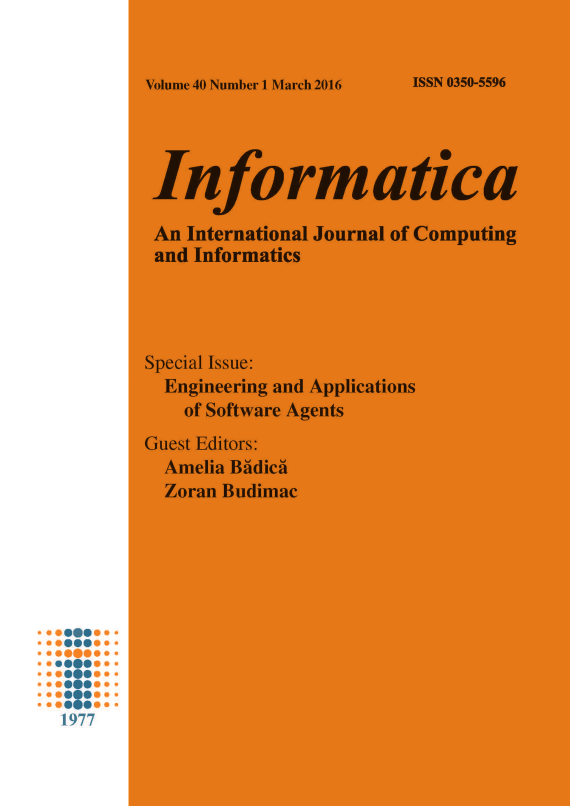Modular Integrated Probabilistic Model of Software Reliability Estimation
Abstract
A modular integrated probabilistic model of software reliability estimation and an algorithm of its application for estimation of software reliability with different architecture such as multilevel, multiversion, distributed and object-oriented ones are presented in the article. The modification of this model is given there for the object-oriented multiversion software with the distributed architecture. The procedure of its estimation is perfected to improve the quality of the reliability prediction. The description of the developed program system based on the modular integrated probabilistic model of reliability estimation of the object-oriented multiversion software with the distributed architecture is presented in the article. The analysis of relation of software reliability parameters to the component count, conditional and unconditional probability of the failure appearance in components and temporary components characteristics is done there as well.References
Abdallah, C., Hafida, B. (2010). A new architectural approach for dynamic adaptation of components-based software using multi agent system. Control Engineering and Applied Informatics, vol.12, no.4, pp. 43-50.
Avizienis, A., Laprie, J.C., and Randell, B. (2001). Fundamental Concepts of Dependability, Research Report no. 1145, LAAS-CNRS.
Avizienis, A., Laprie, J.C., Randell, B. and Landwehr, C. (2004). Basic concepts and taxonomy of dependable and secure computing. IEEE Transactions on Dependable and Secure Computing, vol.1, no.1, pp. 11-33.
Benso, A., Di Carlo, S. (2011). The art of fault injection. Control Engineering and Applied Informatics, vol.13, no.4, pp. 9-18.
Boehm, B. (2011). The Future of Software Engineering, Springer Berlin Heidelberg.
Golubev, I.M., Tsarev, R.Ju., Semenko, T.I. (2005). N-version software systems design. 11th International Scientific and Practical Conference of Students, Postgraduates and Young Scientists; "Modem Techniques and Technologies", MTT 2005 - Proceedings, IEEE, Tomsk, Russian Federation, pp. 147-149.
Huang, C.-Y., Hung, T.-Y. (2010). Software reliability analysis and assessment using queueing models with multiple change-points. Computers and Mathematics with Applications, vol.60, no.7, pp. 2015-2030.
Huang, G., Mei, H., and Yang, F. (2006). Runtime recovery and manipulation of software architecture of component based systems. Automated Software Engineering, vol.13, no.2, pp. 257-281.
Huang, C.-Y., Lin, C.-T. (2006). Software reliability analysis by considering fault dependency and debugging time lag. IEEE Transactions on Reliability, vol.55, no.3, pp. 436-450.
Kang, W.-H., Kliese, A. (2014). A rapid reliability estimation method for directed acyclic lifeline networks with statistically dependent components. Reliability Engineering and System Safety, vol.124, pp. 81-91.
Kulyagin, V.A., Tsarev, R.Y., Prokopenko, A.V., Nikiforov, A.Y., Kovalev, I.V. (2015). N-version design of fault-tolerant control software for communications satellite system. 2015 International Siberian Conference on Control and Communications, SIBCON 2015 - Proceedings, IEEE Inc., Omsk, Russian Federation, pp. 1-5.
Landon, J., Özekici, S., Soyer, R. (2013). A Markov modulated Poisson model for software reliability. European Journal of Operational Research, vol.229, no.2, pp. 404-410.
Lee, W.S., Grosh, D.L., Tillman, F.A., Lie, C.H. (1985). Fault tree analysis, methods, and applications - a review. IEEE Transactions on Reliability, vol.34, no.3, pp. 194-203.
Li, X., Xie, M., Ng, S.H. (2010). Sensitivity analysis of release time of software reliability models incorporating testing effort with multiple change-points. Applied Mathematical Modeling, vol.34, no.11, pp. 3560-3570.
Myers, G.J., Hocker, D.G. (1981). Use of software simulators in the testing and debugging of microprogram logic. IEEE Transactions on Computers, vol.C-30, no.7, pp. 519-523.
Okamura, H., Dohi, T., Osaki, S. (2012). Software reliability growth models with normal failure time distributions. Reliability Engineering and System Safety, vol.16, pp. 135-141.
Park, G.-Y., Jang, S.C. (2014). A software reliability estimation method to nuclear safety software. Nuclear Engineering and Technology, vol.46, no.1, pp. 55-62.
Rekab, K., Thompson, H., Wu, W. (2013). A multistage sequential test allocation for software reliability estimation. IEEE Transactions on Reliability, vol.62, no.2, pp. 424-433.
Rekab, K., Thompson, H., Wu, W. (2013). An efficient test allocation for software reliability estimation. Applied Mathematics and Computation, vol. 220, pp. 94-103.
Toader, C. (2010). Increasing reliability of web services. Control Engineering and Applied Informatics, vol.12, no.4, pp. 30-35.
Tyagi, K., Sharma, A. (2012). A rule-based approach for estimating the reliability of component-based systems. Advances in Engineering Software, vol.54, pp. 24-29.
Zheng, C., Liu, X., Huang, S., Yao, Y. (2011). A parameter estimation method for software reliability models. Procedia Engineering, vol.15, pp. 3477-3481.
Downloads
Published
Issue
Section
License
I assign to Informatica, An International Journal of Computing and Informatics ("Journal") the copyright in the manuscript identified above and any additional material (figures, tables, illustrations, software or other information intended for publication) submitted as part of or as a supplement to the manuscript ("Paper") in all forms and media throughout the world, in all languages, for the full term of copyright, effective when and if the article is accepted for publication. This transfer includes the right to reproduce and/or to distribute the Paper to other journals or digital libraries in electronic and online forms and systems.
I understand that I retain the rights to use the pre-prints, off-prints, accepted manuscript and published journal Paper for personal use, scholarly purposes and internal institutional use.
In certain cases, I can ask for retaining the publishing rights of the Paper. The Journal can permit or deny the request for publishing rights, to which I fully agree.
I declare that the submitted Paper is original, has been written by the stated authors and has not been published elsewhere nor is currently being considered for publication by any other journal and will not be submitted for such review while under review by this Journal. The Paper contains no material that violates proprietary rights of any other person or entity. I have obtained written permission from copyright owners for any excerpts from copyrighted works that are included and have credited the sources in my article. I have informed the co-author(s) of the terms of this publishing agreement.
Copyright © Slovenian Society Informatika








